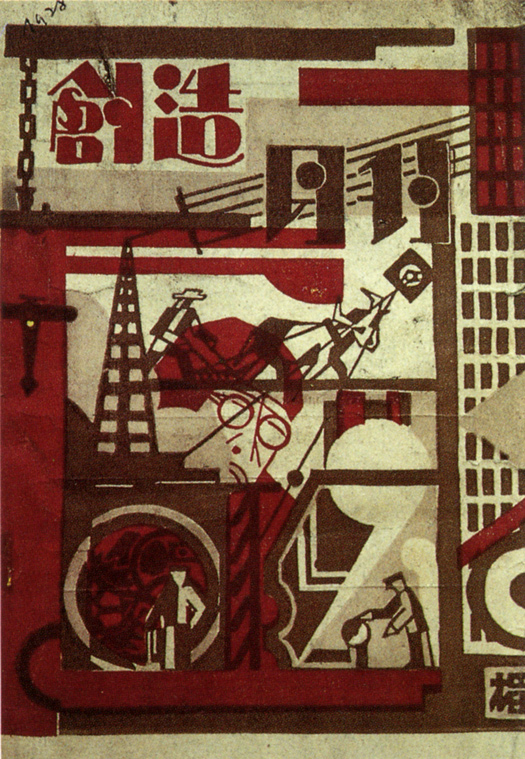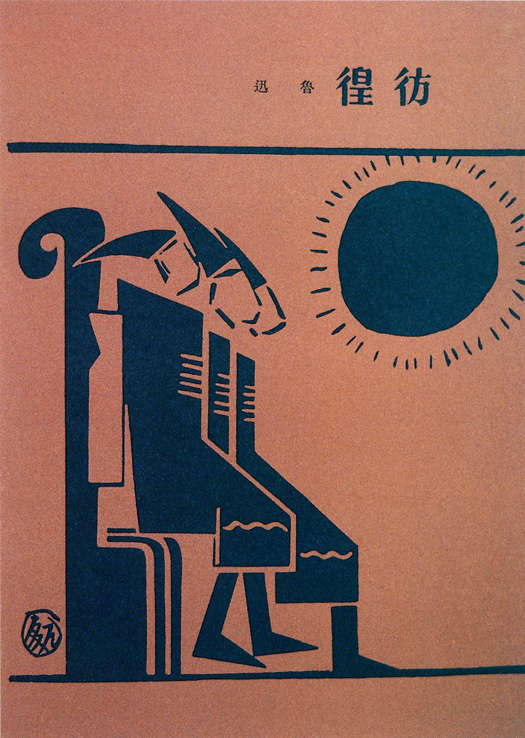(Find me at 50 Watts Books.)
As featured in the book Chinese Graphic Design in the Twentieth Century by Scott Minick and Jiao Ping
About half of this 160-page book is devoted to the 1920s and 30s, when the ideas of writer and artist Lu Xun were very influential, particularly on the young design professionals involved with the May Fourth Movement. My favorite factoid in the book: Lu Xun—who introduced modern woodblock techniques to China—loved the German Expressionists and Käthe Kollwitz in particular. The authors point out that though Lu Xun taught many Western techniques, he always encouraged designers to seek inspiration in Chinese design history.

China Sketch, December 1936
"The End of Science" (back cover)
Illustrator: Zhong-xin

China Sketch, December 1936
Designer: Tian Wu-zai

Ten Years of the Shenshi Telegraphic Dispatch Agency, c. 1930
Designer: Qian Jun-tao

The Short Story Magazine, August 1927.
Designer: Chen Zhi-fo

The Big Black Wolf, 1930
Designer: Qian Jun-tao

A Great Love, 1930
Designer: Qian Jun-tao

Modern Student, June 1931
Designer: Chen Zhi-fo

Book cover, 1936
Designer: Zheng Ren-ze

Children's Music, c. 1930
Designer: Qian Jun-tao

Art Deco-style ad, c. 1930s

Creation Monthly, 1928

Ahead of the Times, January 1931
Designer: Qian Jun-tao

Science and Engineering Magazine, 1935
Designer: Hong Qing

Military Magazine, April 1937

China Sketch, April 1936
"Madame Sanger in China" (Sanger was an American proponent of birth control)
Illustrator: Zhu Jin-lou

The Dividing Line in Love, 1929.
Designer: Qian Jun-tao

The Ladies' Journal, October 1931
Designer: Zhang Ling-tao

Wandering, August 1929
Designer: Tao Yuan-qing

Literature, October 1933
Designer: Chen Zhi-fo

Literature Weekly, undated issue on Russian short stories
Designer: Qian Jun-tao

The Ark, February 1935

Modern Woman, 1933
Designer: Qian Jun-tao

Shanghai Private Kaiming Correspondence School,
Members' Club Quarterly, c. 1930
Designer: Qian Jun-tao

The Muddy Stream, 1931
Designer: Qian Jun-tao

New literature advertisement, c. 1937
Designer: Zhang Xue-fu
For a few more political works see the complementary post on A Journey Round My Skull: Santa Claus delivers a new child into a world of violence and death
Publisher's description:
From posters and advertisements to book covers and magazines, this book presents a dazzling panoply of modern graphic design in China.
Beginning with the basic traditions of Chinese graphics, the authors show how the writer and artist Lu Xun became the center of cultural revival in the new China. We see Art Deco coming to China in the Shanghai Style, and the birth of a dynamic national design style, born of Russian Constructivism and China’s own drive for new technology. The Socialist Realist art of Mao in turn adopted folk art traditions to fuel the Revolutionary machine, while the continuing search for a new identity can be seen in the graphic images of protest from the summer of 1989. 150 color and 135 black-and-white photographs and illustrations.
Chinese Graphic Design in the Twentieth Century makes a nice companion to the Steven Heller's Art Deco Graphic Design series for Chronicle (though it's published by Thames & Hudson).
Previously: Extraordinary early twentieth century book and magazine covers from Japan

























